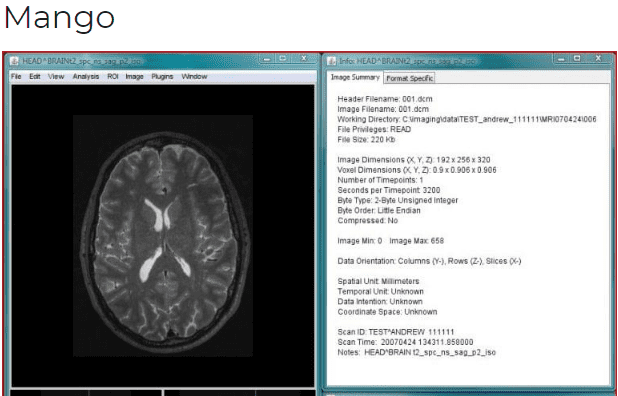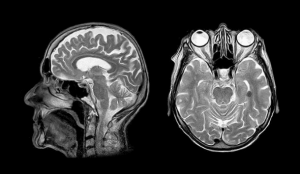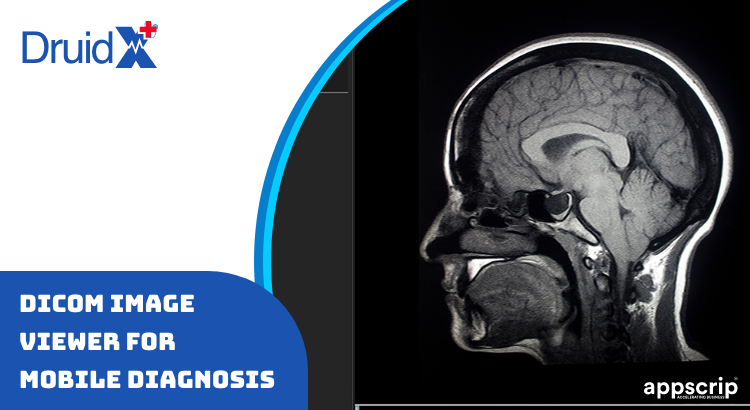In spite of high acceptance rates and diverse choices, complexity of several medical software systems can disappoint healthcare professionals. As the medical field embraces technology even more, providers must possess software tools to share, view, or edit medical images. This can be accomplished through a DICOM image viewer.
Many times sharing and viewing of medical images becomes implausible when outdated EMR software is being utilized. Medical imaging is primarily used to diagnose ailment and monitor progress in a patient. Therefore it becomes imperative that images of patients taken during consultations can be easily shared with specialist across vast distances to enable credible diagnosis.
The DICOM Standard
DICOM acronym for – Digital Imaging and Communications in Medicine – is the worldwide standard to store, share, process, retrieve, print, and project medical imaging information. DICOM is both a communication protocol and file format that stores medical information such as ultrasound, X-ray, MRI images, CT scan, etc along with the patient’s details in one file.

The format ensures all the data stays together and provides ability to transfer that information between devices.
After a medical procedure the report is provided on a disc in DCM / DCM30 format that can be viewed with the DICOM viewer software. Most EHR systems support the DICOM for viewing and transmitting images.
In case your system doesn’t support DICOM, a free DICOM viewer can help you get started.
MicroDicom & Radiology Images
If the DICOM viewer does not suffice then the free MicroDicom program is an option to open such images directly from the disc. After opening in MicroDicom, the metadata can be viewed or exported via JPG, TIF or other common image file types.
Radiology utilizes medical imaging to diagnose and treat diseases. A radiologist diagnoses and treats ailments / injury via medical imaging techniques such as x-rays, computerized tomography (CT), nuclear medicine, MRI, positron emission tomography (PET), and ultrasound.
Mobile Diagnosis
Mobile Diagnosis is an association that aims to share knowledge and provide diagnostic support to the medical fraternity. Here smartphones are used to collate and disseminate diagnostic images. Mobile phone technology is utilized for diagnostic purposes and to access investigative/diagnosis services in remote areas.
The DICOM Image Viewer software listed below are in no particular order, and represents some of the better systems available.

3DimViewer
A simple, smooth, basic graphical user interface makes 3DimViewer easy to use and understand. It displays 3D imaging profile’s that includes multi-planar and orthogonal displays. But its specialty is volume and surface renderings with threshold-based tissue segmentation.
Don’t try using this on older PC’s as GPU acceleration is necessary for volume rendering. Even newer models with integrated graphics chipsets may not come to your rescue.
Navegatium DICOM Viewer
Absolutely intuitive touch-screen interface makes this system easy to use. Navegatium has an absolutely simple logic and works perfectly on Windows 10 and Windows 8.1 tablets, laptops and PCs.
It makes to this list as one among the top Free & Open source PACS Clients & DICOM Workstations because of its outstanding features and can be installed directly from the Windows Store.
DICOM Web Viewer (DWV)

DWV is an absolutely browser-based DICOM viewer that has been written in Javascript and HTML5. Hence it can be used on most devices and with almost all modern browsers that include laptops, tablets, phones, and in fact even some smart TV’s.
With a little bit of coding this system can be incorporated into any PACS server that supports the Web Access to DICOM persistent Objects (WADO) protocol. This is a view-only system without editing option. Therefore the images can be browsed or accessed via a local URL as well.
Mango
This can be considered as one of the most advanced systems, Mango (Multi-image Analysis GUI) that is available for Windows, Mac, or desktop – Linux (Mango), browser (Papaya), or iPad (iMango). The browser version would in fact require coding, so folks with knowledge of HTML and JavaScript are required to make it functional.
Mango supports host of functionalities such as DICOM, NEMA-DES, VTK, MINC, GIFTI & NIFTI image formats, and BrainVisa surface rendering formats. It can create custom imaging formats and filters.

Mango offers a host of analytics, processing, and editing capabilities. It can also convert, register images and make anonymous. It is highly functional compared to many other commercial systems.
MicroDicom: Free DICOM Viewer for Windows
This can be used freely for non-commercial purposes. The MicroDicom application is basically utilized for primary processing of medical images as well as its preservation in the DICOM format.
The system is equipped with enough tools to manipulate DICOM images and the user interface is pretty intuitive.
Sante DICOM Viewer
Sante DICOM Viewer (Free version) supports all functionalities such as CT, MRI, CR, NM, XA, MG, DG, as well as all the manufacturers, and DICOM files (DICOM 3.0/NEMA 2). Sante DICOM Viewer is a stand-alone desktop application that is suitable for DICOM CD/DVD distribution.
The system is operational from a CD/DVD without any serious installation. Nor does it have any other software requirements like .NET or Java run-time libraries, instead opens the DICOMDIR file automatically in the root of the CD/DVD.
JiveX DICOM Viewer
This free DICOM Viewer is capable of reviewing radiology images as well as other types of medical data as in ECG or pdf files, the only catch being the data has to be in DICOM format. To ensure this happens, the DICOM Viewer provides users with access to pertinent information not refrained to radiology in itself.
The data needs to be loaded on the Viewer from an internal folder or via an external media such as CD, DVD or USB. The free DICOM Viewer cannot be linked to the PACS as in the licensed Review Client. It is available for non-commercial use (research or educational purposes).
Advanced Diagnostic Medical Imaging with PostDICOM

PostDICOM helps healthcare professionals keep up with the ever-changing landscape of advanced diagnostic imaging. This easy-to-use and robust diagnostic medical imaging system is a DICOM image viewer with advanced features.
PostDICOM offers cloud-based PACS platform which is supported on several OS including Windows, Mac OS, Linux and Android. You can access DICOM files anywhere, from any device.
PostDICOM has sophisticated tools that enable better diagnosis and educated triage. While PACS are cloud-based, this makes patient data absolutely secure. Patient data can be divided by geographical regions, is encrypted, and secure SSL systems authorized for communication. Images can be made anonymous before loading to PACS server.
Conclusion Dicom Image Viewer
All medical imaging equipment manufactured from now on has to conform to the DICOM standards. As diagnostic medical imaging moves forward we fathom that development comes at a price. The cost of the technology, research and implementation reflect in the increased cost of healthcare.
This system is particularly useful when the world moves to remote care or telemedicine. Because during remote consultations, that involves pediatrics too – reports with images can be shared utilizing this technology.
Hence developing nations still rely on outdated X-ray imaging and films for diagnosis of illnesses, and reserve such advanced imaging techniques for complex health conditions.
After an Engineering degree and a Diploma in Management I devoted 16+ years working in the automotive industry. My innate skill and extreme passion in writing, encouraged me to adopt it up as a profession. I have been writing for more than 10+ years in the software industry. The 400+ blogs I published are informative, exhaustive and interesting to a professional and causal reader.










